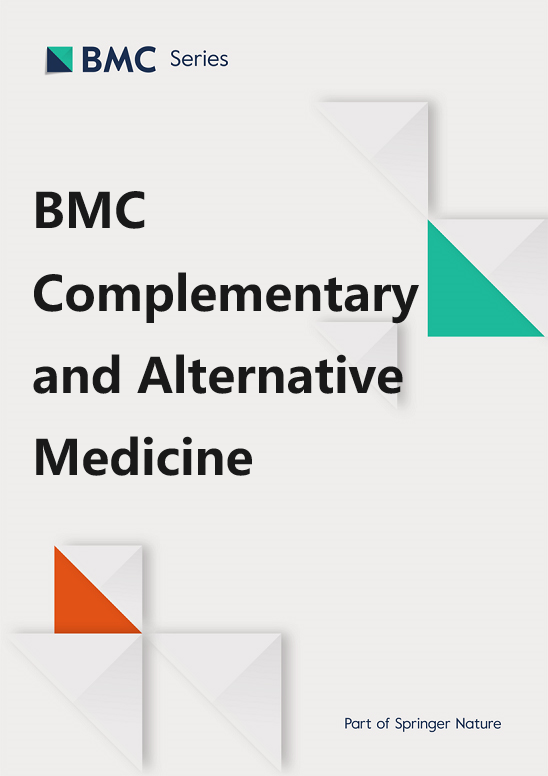Free radical scavenging and anti-isolated human LDL oxidation activities of Butea superba Roxb. extract
IF 3.4
2区 医学
Q1 Medicine
引用次数: 0
Abstract
Butea superba Roxb. (B. superba), is an herbal plant traditionally used for rejuvenation. Additionally, there have been reports on its antioxidant properties. Low-density lipoproteins (LDL) oxidation is the leading cause of cardiovascular diseases (CVDs). Natural products with antioxidant properties have the potential to inhibit LDL oxidation. However, no work has been done about the anti-isolated human LDL oxidation of B. superba extract (BSE). This study aimed to investigate the antioxidant potential of BSE and its ability to prevent isolated human (LDL) oxidation induced by free radical agents. The antioxidant properties were investigated by antioxidant assays, including 2,2-diphenyl-1-picrylhydrazyl (DPPH), 2,2-azinobis-(3-ethylbenzothiazoline)-6-sulfonic acid (ABTS), ferric reducing ability power (FRAP), nitric oxide (NO) and peroxynitrite scavenging assay. More so, anti-isolated human LDL oxidation activities were evaluated by 2,2'-azobis (2-amidinopropane) dihydrochloride (AAPH) and 3-morpholinosydnonimine hydrochloride (SIN-1) induced LDL oxidation assay. BSE exhibited a significant (p < 0.05) antioxidant activity in all the test systems, demonstrating its potential as a potent free radical scavenger. It displayed scavenging effects on DPPH (p < 0.05; IC50 = 487.67 ± 21.94 µg/ml), ABTS (p < 0.05; IC50 = 30.83 ± 1.29 µg/ml). Furthermore, it generated significantly (p < 0.05) increased antioxidant capacity in a dose-dependent manner in FRAP assay and exhibited significantly (p < 0.01) higher percent NO scavenging activity than gallic acid. Besides, BSE at 62.5 µg/ml exhibited a considerable percent peroxynitrite scavenging of 71.40 ± 6.59% after a 2 h period. Moreover, BSE demonstrated anti-isolated human LDL oxidation activity induced by AAPH and SIN-1 (p < 0.05) and revealed scavenging activity similar to ascorbic acid (p > 0.05). Identifying the main constituents of BSE revealed the presence of genistein, daidzein, and biochanin A through Liquid Chromatography-Mass Spectrometer/Mass Spectrometer (LC–MS/MS) analysis. This is the first report that the presence of isoflavones in BSE could play an important role in its antioxidation and isolated human LDL oxidation scavenging properties. These findings suggest the potential for developing antioxidant herbal supplements. However, further studies must be investigated, including efficacious and safe human dosages.艳紫铆提取物清除自由基和抗分离人低密度脂蛋白氧化的活性
艳紫铆(Butea superba Roxb.)是一种草本植物,传统上用于恢复活力。此外,还有关于其抗氧化特性的报道。低密度脂蛋白(LDL)氧化是导致心血管疾病(CVDs)的主要原因。具有抗氧化特性的天然产品具有抑制低密度脂蛋白氧化的潜力。然而,目前还没有关于 B. superba 提取物(BSE)抗分离人低密度脂蛋白氧化的研究。本研究旨在调查 BSE 的抗氧化潜力及其防止自由基诱导的离体人体(低密度脂蛋白)氧化的能力。抗氧化试验包括 2,2-二苯基-1-苦基肼(DPPH)、2,2-偶氮二-(3-乙基苯并噻唑啉)-6-磺酸(ABTS)、铁还原能力(FRAP)、一氧化氮(NO)和过亚硝酸清除试验。此外,还通过 2,2'-偶氮双(2-脒基丙烷)二盐酸盐(AAPH)和 3-吗啉基二壬亚胺盐酸盐(SIN-1)诱导的低密度脂蛋白氧化试验评估了抗分离人低密度脂蛋白氧化活性。BSE 的氧化作用明显(P 0.05)。通过液相色谱-质谱仪/质谱仪(LC-MS/MS)分析,确定了 BSE 的主要成分,发现其中含有染料木素、大豆雌酚和生物茶素 A。这是首次报道 BSE 中异黄酮的存在可在其抗氧化和分离人体低密度脂蛋白氧化清除特性中发挥重要作用。这些研究结果表明了开发抗氧化草药补充剂的潜力。不过,还必须开展进一步的研究,包括对人体有效和安全的剂量。
本文章由计算机程序翻译,如有差异,请以英文原文为准。
求助全文
约1分钟内获得全文
求助全文
来源期刊

BMC Complementary and Alternative Medicine
INTEGRATIVE & COMPLEMENTARY MEDICINE-
CiteScore
7.00
自引率
0.00%
发文量
0
审稿时长
3 months
期刊介绍:
BMC Complementary Medicine and Therapies is an open access journal publishing original peer-reviewed research articles on interventions and resources that complement or replace conventional therapies, with a specific emphasis on research that explores the biological mechanisms of action, as well as their efficacy, safety, costs, patterns of use and/or implementation.
 求助内容:
求助内容: 应助结果提醒方式:
应助结果提醒方式:


